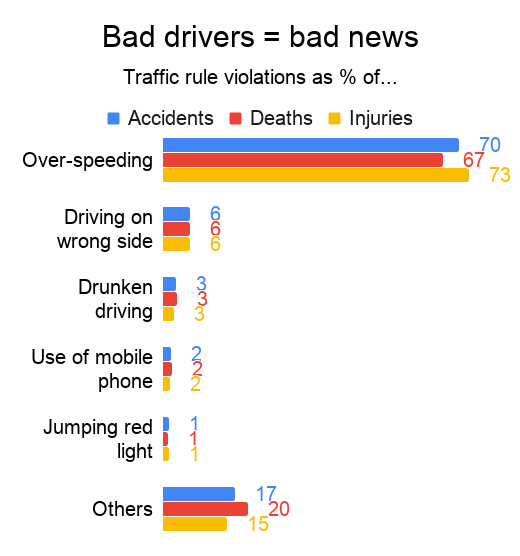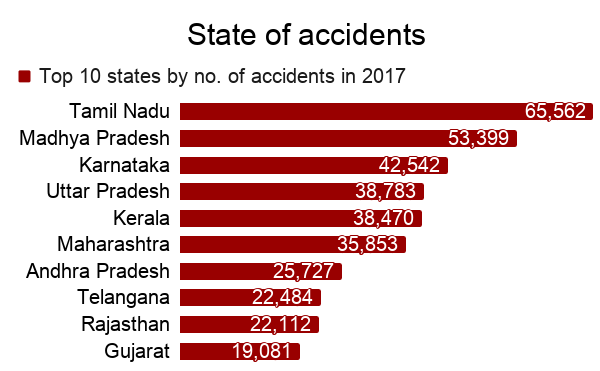The problem: A road accident happens every minute in India in which at least one person is injured and every third accident claims a life, on an average. Bad drivers account for 84% of these accidents. Over speeding was the reason behind 70% of the road accidents, 67% of deaths and 73% of injuries in 2017. About 8,000 people lost their lives and about 20,000 were injured in 2017 because the driver of the vehicle was either drunk or busy on his mobile phone. About 60% of vehicles driven on Indian roads are uninsured despite it being mandatory by law, which means in case of accidents many victims cannot claim compensation from insurance companies. In 10% of the accidents in 2017, the drivers didn’t have a valid driving licence.

The solution: Most of the steps taken in the past focused on the victims of road accidents instead of errant drivers. So, last year the government made it mandatory for car or two-wheeler buyers to get a three-year or five-year insurance policy. There’s now a scheme to set up a trauma centre every 100 km on national highways, along with the Good Samaritan Law (enacted in 2015) so that people can help victims. On the other hand, the new Motor Vehicles Act, which has led to a steep increase in penalty for traffic violations is an attempt to tackle the cause of the problem — bad drivers.

The question: Steep penalties, the biggest tool to curb errant driving, is now being cited by states to either not implement the Act (the fines will “overburden” people says West Bengal chief minister) or reduce the fines (it is being done on “humanitarian grounds” says Gujarat). States like Bihar, Goa, Odisha, Maharashtra, Kerala and Uttarakhand have called for lowering the fines too. The irony is that these states would have the highest number of drivers cheering their moves because they claim the highest number of lives on their roads.
Date: September 13, 2019
Leave a Reply